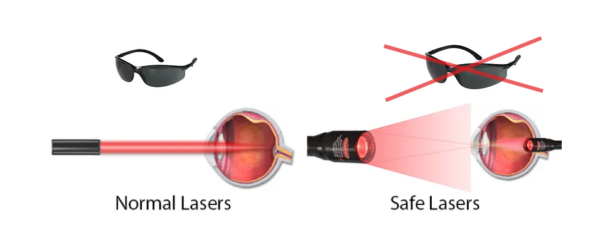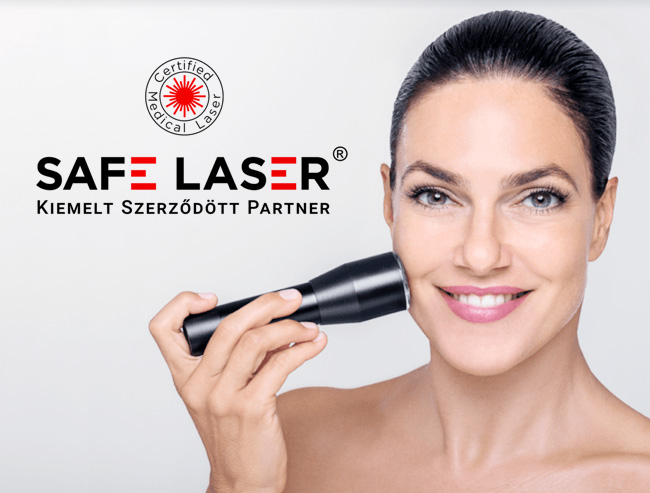Handy Advice To Picking Safe Laser Therapy
Wiki Article
How Can Safe Low-Level Laser Therapy (Lllt) Which Is Also Referred To As Low-Level Laser Therapy, Aid In The Treatment Of Respiratory Inflammatory Disease?
Secure Laser Low-Level Laser Therapy (LLLT), can help reduce respiratory inflammation via several mechanisms. Anti-inflammatory effects- LLLT has been proven to decrease inflammation, through inhibiting proinflammatory cytokines, and promoting anti-inflammatory mediators. LLLT is a treatment that can reduce symptoms of respiratory illnesses like bronchitis.
Bronchodilation LLLT may help relax the smooth muscle cells that line airways. This is beneficial for people who have conditions like asthma or chronic obstruction of the lungs (COPD), when bronchoconstriction causes breathing difficulties.
Improved blood circulation LLLT increases microcirculation through vasodilation. This improves the flow of blood into the lungs. A better blood circulation is an excellent method to supply oxygen and nutrition to inflamed areas, which aids in healing and decreasing inflammation.
Increased immune response LLLT is proven to enhance immunity by stimulating cytokines production and enhancing phagocytosis. This happens when immune cells infiltrate, and then destroy, pathogens. This can help boost the immune response against respiratory infections and decrease inflammation of the airways.
Reduced Mucus Prodution- LLLT can reduce the amount of airway mucus by promoting the clearing of mucus and decreasing inflammation of the respiratory tract. This is particularly helpful for individuals with conditions such as chronic bronchitis or sinusitis, where excessive mucus production contributes to respiratory symptoms.
Alleviation Allergic Reactions – LLLT can be used to treat allergic rhinoitis (hay fever), a condition characterized as an inflammation of the nasal passages and the sinuses. LLLT may help to alleviate allergic symptoms such as nose congestion, sneezing and itching by reducing inflammation and modulating the immune system.
Safe Laser's low-level therapy offers an non-invasive, drug-free remedy to respiratory inflammation. It eases the symptoms and improves functioning of the respiratory system. However, LLLT should only be utilized after consulting with an expert physician to determine the correct diagnosis. Take a look at the best lágylézer for blog examples including lágy lézer, laser hu, lézer kezelés hatása, lágy lézer vélemények, lágylézer készülék, mozgásszervi problémák, laser hu, lágylézer kezelés budapest, lágy lézer kezelés, lézeres fájdalomcsillapítás and more.

What Can Low-Level Laser Therapy Aid In Ear Problems (Lllt?)
Low level safe laser therapy (LLLT), can help with a variety of ear-related issues by using a variety methods. Reduced inflammation - LLLT's anti-inflammatory properties can help reduce the inflammation that occurs in the ear canal or middle ear. LLLT can be used to treat conditions like Otitis externa (inflammation in the ear's outer) or otitis moderate (middle ear infections).
LLLT is effective in relieving pain, discomfort and earaches caused by Otitis or earaches.
LLLT can aid in the healing process by increasing the rate of tissue repair. LLLT can aid in promoting quicker healing for conditions such as otitis and injury to the eardrum. This may lower the risk of complications, improve overall ear health, and reduce the risk of developing complications.
Improved Blood Circulation LLLT improves microcirculation, vasodilation and the flow of blood into the ear. Improved circulation helps deliver nutrients and oxygen to the damaged or inflamed tissues. This helps to speed up healing.
Tinnitus Management LLLT is being researched as a possible treatment option for Tinnitus. Tinnitus is characterized by buzzing and ringing in the ear. While it's not known the mechanism by which LLLT performs however, it has been proven to improve blood flow, lessen inflammation, and ease the tinnitus.
LLLT can help reduce earwax buildup. This will make it easier to remove and less likely to get an infection or blockage. This can be particularly helpful to those with excessive earwax, or who experience earwax imposition.
Overall, safe Laser low-level laser therapy offers a non-invasive and drug-free approach to treating a range of ear disorders that can alleviate symptoms like pain, inflammation, and accumulation of earwax. It is recommended to speak with an ENT specialist before using LLLT on ear problems. This will ensure that you are given the proper treatment and diagnosis. Read the most popular safe laser 1800 for blog info including laser hu, lézeres fájdalomcsillapítás, safe laser bérlés, lágylézer készülékek, gyógyító lézer készülékek, safe laser készülék, lágylézer készülék bérlés, lágy lézer vélemények, lágy lézer kezelés, lágylézer kezelés árak and more.

How Long Does It Usually Take For A Laser Be Effective On Conditions Of The Ear, Nose And Throat?
Safe Low-level therapy with lasers (LLLT), which can be used to treat ENT ailments, may have various results, based on the condition being treated. Other variables include the seriousness of the problem and the patient's response to treatment. Typically, a sequence of LLLT sessions over a specified time period is suggested to obtain optimal outcomes for ENT conditions.The amount of LLLT sessions required for ENT conditions depends on several factorsincluding
The severity and type of the disease- The severity and type ENT conditions may affect the amount of LLLT sessions that are required for treatment. Laryngitis, tonsillitis and laryngitis which require a variety of treatment options, such as LLLT can require a variety of treatments.
The individual's response to treatment - factors like immune status, health status, and healing ability can affect the way that a person responds to LLLT treatment for ENT conditions. Certain people react to treatment faster and will see faster improvement in symptoms. Some people might require longer therapy.
Treatment Protocol – The treatment plan recommended by the ENT specialist plays an important role in the determination of LLLT sessions' frequency and the number of sessions required to treat ENT problems. Healthcare professionals can tailor the treatment plan according to patient's specific needs. This could involve scheduling LLLT sessions several times each week, or at particular intervals over a long period of time.
Acute in contrast to. Chronic conditions - The amount of LLLT sessions for treatment can be affected by the distinction between acute and a chronic condition. In acute cases, for example, acute sinusitis or acute pharyngitis may require fewer sessions in order to get relief, whereas chronic diseases like chronic rhinosinusitis and chronic laryngitis might require more time-consuming treatment.
Certain people can see improvement in ENT conditions with just few LLLT sessions. Some individuals might require longer-term treatment to achieve optimal outcomes. In order to maximize the benefits of therapy for ENT issues, it's essential to follow the prescribed treatment plan and attend every scheduled LLLT sessions. Additionally, it's important to keep an eye on your symptoms and talk to your ENT physician to ensure that the appropriate treatment plan and management is executed.